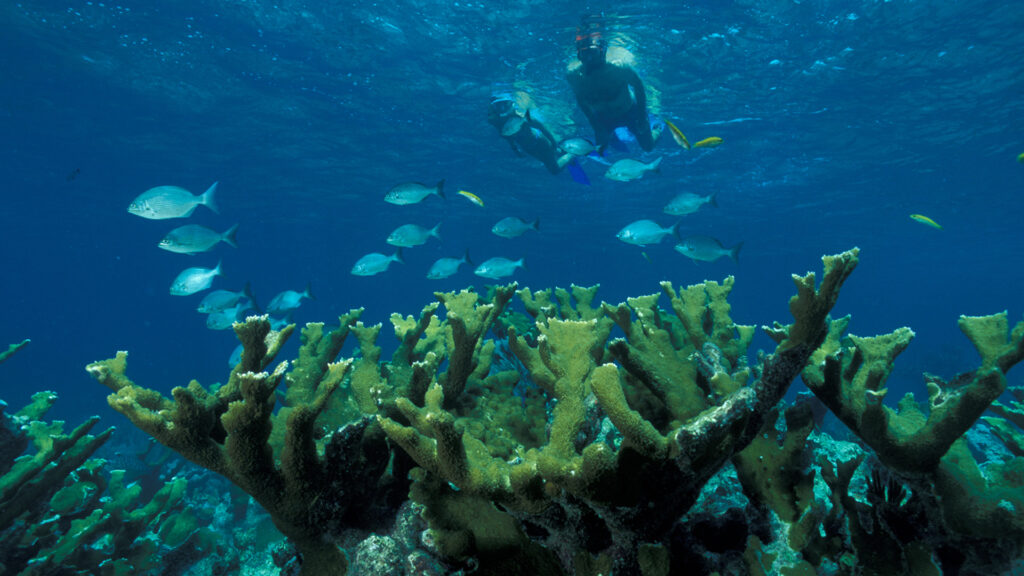By Rachel Silverstein, Miami Waterkeeper
The very essence that draws tourists from around the world and supports our enviable quality of life in South Florida – pristine beaches, vibrant marine life and the continental United States’ only nearshore coral reefs — is under siege, demanding urgent attention and innovative solutions.
As executive director and waterkeeper of Miami Waterkeeper, tasked with ensuring nature-based solutions for clean water, habitat protection and sea-level rise resilience, I understand the delicate balance between the magnetic attraction to Miami’s waterways and the real threats that increased urban density inflicts.

Earlier this month, during Miami Watekeeper’s annual State of the Water event on Virginia Key, I retold my personal story: being a newly minted waterkeeper who found herself in the middle of a David vs. Goliath struggle with the Army Corps of Engineers and a multinational company during the dredging of PortMiami. The 2013-15 dredging operation was part of an effort to enable the port to handle the new supertankers coming through the expanded Panama Canal.
After attempts to mislead and cover up the extensive damage, including the Army Corps filing misleading photos in federal court and at public meetings, the environmental consultants working for the dredging company wrote a report concluding that only six corals were destroyed by the dredging. Having seen the damage with my own eyes and witnessing the moonscape of a buried reef spanning a large area, I knew this couldn’t be correct.
I spent a year with my scientific co-authors re-analyzing the raw data the consultants had produced, and our subsequent scientific research, published in 2019, demonstrated that millions of corals were likely killed. Our findings were supported by a National Oceanic and Atmospheric Administration report, finally released last August. That study also concluded that at least 278 acres of the Florida Reef Tract had been severely impacted by the dredging.
Corals, often overlooked in their significance, are vital components of our marine ecosystems. Beyond their aesthetic appeal, they play a crucial role in supporting marine biodiversity — supporting over 25% of all marine life — and act as natural barriers protecting coastal communities from erosion and storm surges by reducing wave energy an average of 95%.
In Southeast Florida alone, corals provide, on average, over $600 million in coastal protection every year. That number skyrockets with a big storm. But our reefs are rapidly disappearing due to warming oceans, disease, pollution and irresponsible coastal construction like the PortMiami dredging. The urgent need to prioritize visionary coral preservation and restoration efforts cannot be overstated. Our reefs are a shadow of their former majesty — and trending downward every year.

Collaboration and community engagement are paramount in the journey toward restoration. As a community, we should rally around the idea of fixing this harm through the establishment of an industrial-scale coral restoration facility in Miami-Dade County. We can bring our reefs back — and show the world how to do it. This would not only promise economic opportunities and create a new industry but would also protect our coastlines and foster fishing and ecotourism activities.
Innovation emerges as a beacon of hope in this crisis. Miami is witnessing the confluence of visionary ideas and technologies driving the potential for large-scale coral restoration. Embracing science-based techniques that can be used to scale up our ability to restore reefs by orders of magnitude — from tens of thousands of corals a year to millions — presents an opportunity to reverse the damage inflicted upon our natural reefs.
The connection between coral restoration efforts and broader climate resilience strategies, exemplified by the nascent South Florida-based ClimateReady Tech Hub, underscores the opportunity for integrated solutions that address environmental and community-level needs. The success stories emerging from such an initiative would position Miami as a global leader in deploying community-level climate technologies.
Rachel Silverstein, Ph.D., is executive director and waterkeeper for Miami Waterkeeper.
If you are interested in submitting an opinion piece to The Invading Sea, email Editor Nathan Crabbe at ncrabbe@fau.edu. Sign up for The Invading Sea newsletter by visiting here.



